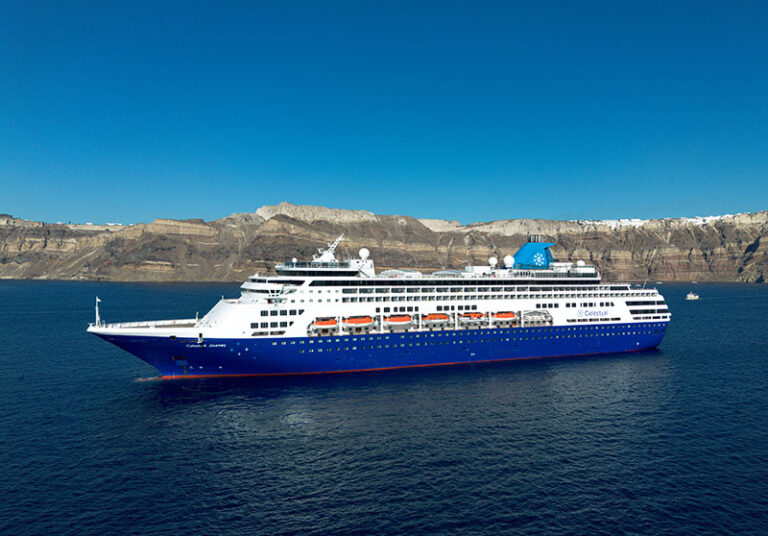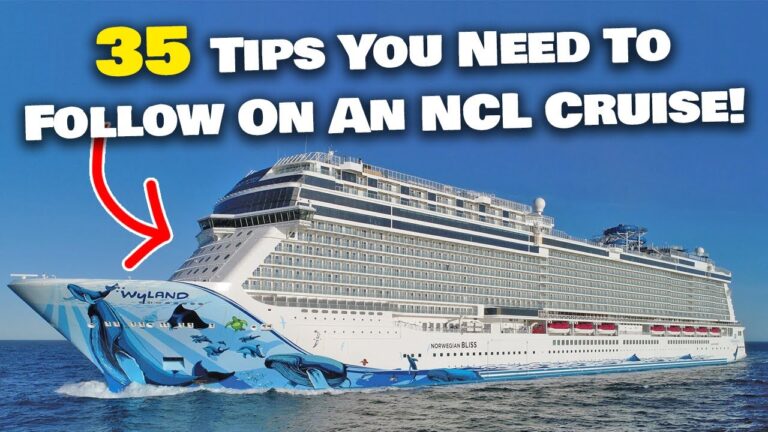Unlocking Local Treasures: Cruise Ports Near Me Finally Revealed
Understanding Cruise Ports
Embarking on a cruise vacation involves more than just boarding a ship. It’s a journey that takes you to various destinations, each with its own unique attractions and experiences. Central to this journey are the cruise ports, where the ship docks and the exploration begins.
What are Cruise Ports?
Cruise ports, often referred to as port of calls, are designated locations where cruise ships stop to allow passengers to disembark and explore the surrounding area. These ports can be located in various parts of the world, from tropical islands to bustling cities. Each port has its own distinct character and attractions, offering a range of activities, sightseeing opportunities, and cultural experiences.
Cruise ports can vary in size, with some being able to accommodate multiple large cruise ships at once, while others are smaller and can only host one or two vessels at a time. Regardless of size, all cruise ports provide essential services, including customs and immigration facilities, docking and anchorage areas, and passenger terminals.
For more information on what a cruise port is and how it functions, visit our detailed guide on cruise ports.
Importance of Cruise Ports in Vacation Planning
The importance of cruise ports in vacation planning cannot be overstated. They play a significant role in determining the overall experience and satisfaction of a cruise holiday. When planning a cruise, it’s common for vacationers to search for “cruise ports near me” to find accessible and convenient options.
The selection of cruise ports on an itinerary can influence the types of activities and excursions available to passengers. For instance, a port located in a historic city may offer tours of ancient ruins or museums, while a port in a tropical location might provide beach-related activities or wildlife encounters.
Moreover, the proximity of the port to the town or city center is crucial. It influences the ease of access to local attractions, dining options, and shopping opportunities. Therefore, researching and understanding the specifics of each port on your cruise itinerary can enhance your overall vacation experience.
It is also important to consider the time spent at each port. Some cruises may only stop for a few hours, while others might stay overnight, allowing more time to explore and experience the local culture.
For a comprehensive understanding of what to expect from various cruise ports around the world, refer to our guides on florida cruise ports, alaska cruise ports, mexican cruise ports, caribbean cruise ports, among others.
In conclusion, understanding cruise ports and their offerings is an integral part of cruise vacation planning. It ensures you are well-prepared for the journey and can make the most of each port visit.
Finding Local Cruise Ports
When it comes to planning a cruise vacation, one of the most exciting parts is exploring the various ports along the journey. However, the first step often involves finding a local cruise port from where you can embark on your sea voyage.
The Search for “Cruise Ports Near Me”
Searching for “cruise ports near me” can reveal a wealth of information about the options available in your vicinity. A good place to start is a general internet search or utilizing specific cruise line websites that offer a “find a cruise port” feature.
Another useful resource is our comprehensive cruise ports guide that provides detailed information about various cruise ports, including Florida cruise ports, Alaska cruise ports, and more.
Whether you’re located on the coasts or near navigable rivers and lakes, you might be surprised to find a number of cruise port options close to home.
Key Factors in Evaluating Local Cruise Ports
When evaluating local cruise ports, there are several key factors to consider:
1. Destination Routes: Different cruise ports offer distinct destination routes. Some may cater to specific regions like the Caribbean, Alaska, or Europe. Review the typical routes from your local cruise port to ensure they align with your desired destinations.
2. Amenities: Consider the amenities and facilities offered at the cruise port, such as parking, food and beverage options, and accessibility features.
3. Cruise Lines: Not all cruise lines operate from every port. Ensure the port you are considering is serviced by the cruise line you prefer.
4. Proximity to Home: Evaluate the distance of the cruise port from your home. The closer the port, the easier and less expensive it will be to travel to the port.
5. Port Reputation: Look at reviews and ratings of the cruise port to understand the experiences of previous cruisers. This can give you insights into the efficiency of the port’s operations, the helpfulness of the staff, and the overall port environment.
Finding the right cruise port is a critical step in your cruise vacation planning process. By understanding the factors to consider and leveraging resources like our cruise ports guide, you can ensure a smooth start to your cruising adventure.
What to Expect at Cruise Ports
The excitement of a cruise vacation often starts and ends at the port. Understanding what to expect when you arrive and depart from these cruise ports near me can help you plan your trip more effectively.
Arrival and Departure Procedures
When the cruise ship docks at a port, passengers are usually allowed to disembark and explore the local area for a few hours. The exact timing and process will depend on the specific cruise line and port, but generally, passengers are given a time to return to the ship before it departs for the next destination.
During the debarkation process, passengers must present their cruise card and a valid form of identification. Some ports may also require additional documentation, such as a passport or visa, depending on the destination.
When it’s time to depart, passengers are usually asked to return to the ship at least 30 minutes prior to the scheduled departure time. This allows time for a headcount and ensures that all passengers are safely onboard before the ship leaves the port.
For more detailed information about arrival and departure procedures at various ports, refer to our comprehensive cruise ports guide.
Amenities and Facilities
Cruise ports are designed to cater to the needs of travelers, providing a range of amenities and facilities to enhance your experience. Most ports feature a terminal building where passengers can find services such as information desks, restrooms, and sometimes shops or cafes.
In addition to the terminal building, many ports also offer amenities such as:
- Transportation services: Shuttles, taxis, and public transportation options to help you explore the local area.
- Shopping opportunities: Duty-free shops, souvenir stores, and local markets.
- Dining options: Restaurants, food stalls, or cafes offering local and international cuisine.
- Tourist information: Information desks or kiosks providing maps, brochures, and details about local attractions.
Some larger ports may offer additional facilities like luggage storage, currency exchange, and Wi-Fi access. It’s important to note that the availability of these amenities can vary significantly from port to port.
Before your cruise, it’s a good idea to research the facilities available at each port on your itinerary. This can help you plan your time effectively and ensure that you have everything you need to make the most of your visit. Our cruise ports map is a great resource for getting an overview of different ports around the world.
Remember, every cruise port offers a unique experience with its own set of offerings and attractions. By understanding what to expect, you can ensure a smooth arrival and departure, and make the most of your time at each port.
Exploring Cruise Ports
Understanding the proximity of cruise ports to local attractions, dining, and shopping opportunities can significantly enhance your vacation experience. This section provides a brief overview of what you can expect when exploring cruise ports near me.
Proximity to Town and Local Attractions
The distance between the cruise port and the town or local attractions can vary considerably. Some ports are located in the heart of the city, allowing passengers to simply walk off the ship and start exploring. Others may require a short taxi ride or shuttle service to reach the main attractions.
| Cruise Port | Distance to Town |
|---|---|
| Port A | 0.5 miles |
| Port B | 2 miles |
| Port C | 5 miles |
It’s essential to research the proximity of your chosen cruise port to the local attractions. This information can be found in our detailed cruise ports guide.
Dining Options Near Cruise Ports
Food is an integral part of any travel experience. Cruise ports often have a variety of dining options nearby, ranging from local street food stalls to gourmet restaurants.
Whether you’re looking for a quick bite or a leisurely meal, it’s worth exploring the dining options near your cruise port. For instance, ports in the Mediterranean may offer an array of seafood restaurants, while those in Asian locations might feature local cuisine.
| Cruise Port | Dining Options |
|---|---|
| Port A | Seafood restaurants, local cuisine |
| Port B | Street food stalls, international cuisine |
| Port C | Pizzerias, gourmet restaurants |
Shopping Opportunities
Shopping is another popular activity for cruise passengers. Many cruise ports are located near shopping districts, offering everything from local crafts to designer brands.
Whether you’re in search of a unique souvenir or looking to indulge in some retail therapy, the shopping opportunities near cruise ports can cater to a wide range of tastes and preferences.
| Cruise Port | Shopping Options |
|---|---|
| Port A | Local crafts, souvenirs |
| Port B | Designer brands, shopping malls |
| Port C | Duty-free shops, local markets |
Exploring cruise ports near me involves more than just stepping off the ship – it’s about immersing yourself in the local culture, trying new foods, and making unforgettable memories. By researching and planning ahead, you can ensure that you make the most of your time at each port of call. For more information on the most popular cruise ports, visit our article on popular cruise ports.
Making the Most of Cruise Ports
Paying a visit to a cruise port can be a fascinating part of your vacation. To ensure you enjoy the best experience possible, take some time to plan your visit, understand how to navigate the port, and gather essential travel information.
Planning Your Cruise Port Visit
Planning is key when it comes to making the most of your visit to cruise ports. Before setting foot on the dock, it’s a good idea to research the port and nearby attractions.
You can look for information about the port’s proximity to local attractions, dining options, shopping opportunities, and more. This information can be found in our cruise ports guide.
It may also be beneficial to create a loose itinerary for your visit. Having a plan can help you maximize your time and ensure you don’t miss out on any must-see attractions or experiences.
Tips for a Smooth Cruise Port Experience
Here are a few tips to ensure a smooth and enjoyable cruise port experience:
- Arrive Early: Cruise ports can be busy places, especially during peak travel seasons. Arriving early can help you avoid crowds and give you more time to explore.
- Dress Appropriately: Check the weather forecast for the day of your visit and dress accordingly. Comfortable shoes are a must, as you might end up doing a fair bit of walking.
- Stay Hydrated and Apply Sunscreen: Especially in warmer climates, it’s important to stay hydrated and protect your skin from the sun.
Essential Travel Information for Cruise Ports
Before you visit a cruise port, you’ll need to gather some essential travel information. This might include:
- Port Location: Knowing the exact location of the port can help you plan your travel to and from the port. Our cruise ports map can help with this.
- Customs and Immigration Processes: If you’re visiting a port in a different country, you’ll need to understand the customs and immigration processes. This might involve researching visa requirements, customs allowances, and more.
- Local Currency and Language: It’s useful to know the local currency and language of the port you’re visiting. This can help you communicate with locals and make any necessary purchases.
By taking the time to plan your visit, understand the port, and gather essential travel information, you can ensure you make the most of your visit to any of the cruise ports near me. Whether you’re exploring the Caribbean cruise ports or venturing to the european cruise ports, preparation is key to a memorable experience.







